All about Knauf tongue-and-groove slabs
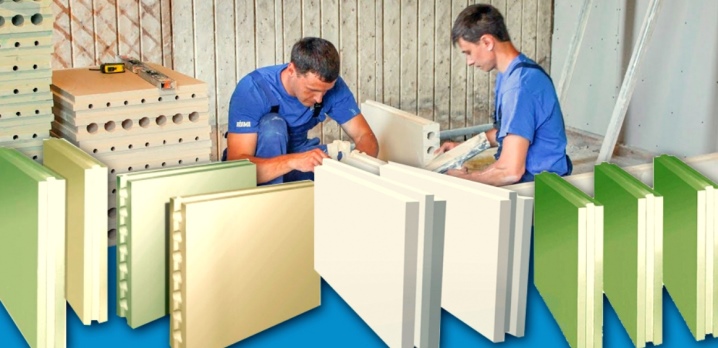
The modern world is specific with the rapid development of technologies in various spheres of human activity, due to which materials, proven by millennia of use, suddenly become irrelevant. This happened, for example, with the good old brick - although it is still necessary for capital construction, interior partitions are not always built from it. Instead, newer solutions such as tongue-and-groove slabs are used. If they are also produced by a well-recognized company such as Knauf, then the demand for them becomes even higher.
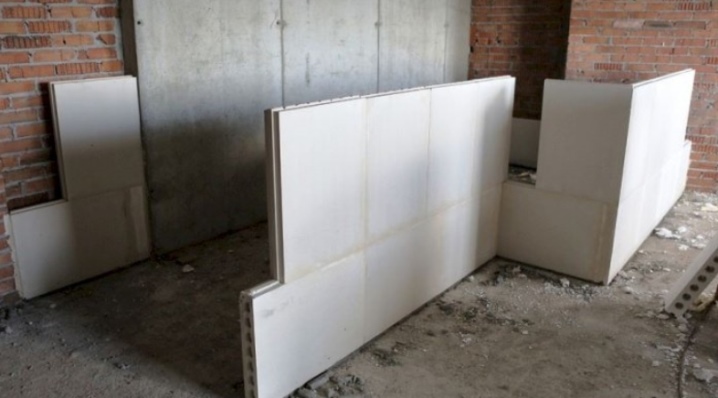
Peculiarities
As the name implies, tongue-and-groove plates, which are sometimes also called blocks, are interconnected using grooves and ridges. For construction, this is in a sense a revolution, because no additional fasteners and glue mixtures are needed, and the assembly is simple and quick, moreover, without unnecessary dirt. However, this is not the only characteristic that allows the new material to successfully compete with brick in terms of popularity.

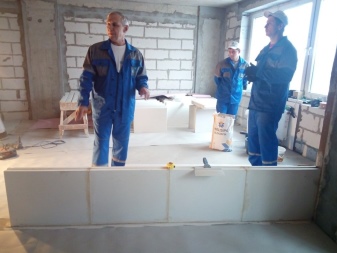
In multi-storey buildings, especially in those that were built a long time ago, the owner, when redeveloping, must also take into account the maximum allowable weight of the partition, which is often small. Brickwork even in one layer cannot be called light, but GWPs are lightweight, so you do not run the risk of being liable for violation of housing standards. Of course, in terms of mass, foam blocks and aerated concrete could compete with tongue-and-groove slabs, but these materials do not have the advantages of purity and simplicity mentioned in the first paragraph.
GWP Knauf, unlike competitors, are mounted even faster than the only adequate competitor in the face of drywall... The new wall is ready immediately upon completion of the assembly: there is no need to wait for the mortar to dry, and there will not really be any dirt, you can quickly put the apartment in order and move on.
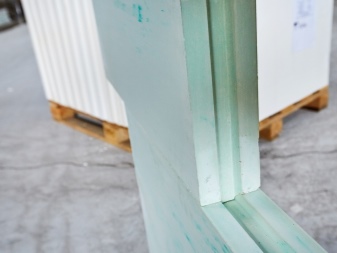
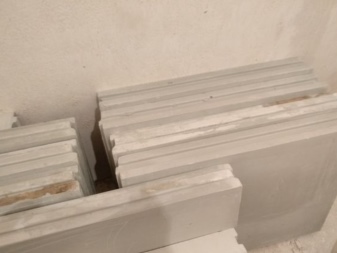
It is not necessary to hire specialists for installation - if there is an experienced man in the house with the skills to work with his hands, he will cope with the installation on his own. Considering that GWP usually does not even require plastering and can be finished immediately, there are huge cost savings. At the same time, in terms of noise and sound insulation, such material looks quite worthy.
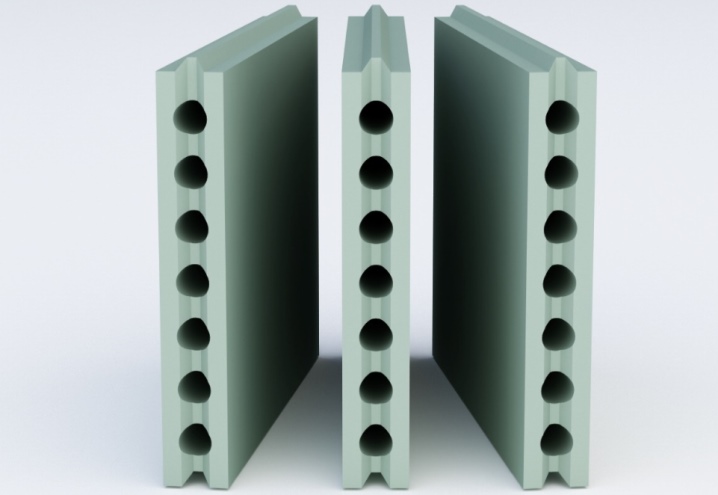
Types and sizes
When planning the construction of an interior partition made of gypsum plaster, it is worth paying more attention to both the dimensions and other properties. Having correctly measured the dimensions of the planned partition, you can pick up gypsum fragments so that cutting takes a little time and effort, and the waste is as small as possible.
Knauf products are good because the company provides consumers with a fairly wide selection of possible block sizes, further simplifying installation work. The assortment may change periodically, but the most popular solutions are unchanged - these are 667x500x80 and 667x500x100 mm (some stores indicate 670x500x80 mm), as well as 900x300x80 mm. Already from the above, it was possible to notice that not only the length and width differ, but also the thickness - there is 80, and there is 100 mm. It is these numbers that were chosen for a reason - this is the most common wall thickness in capital buildings, because door frames are designed specifically for these two standards.
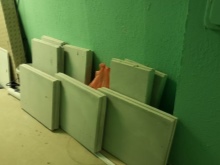

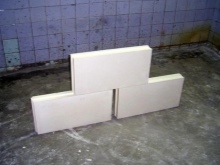
Standard
Ordinary tongue-and-groove plates of the German manufacturer are produced based on gypsum with minimal addition of any additional ingredients... This is a completely natural material that cannot harm human health at all, and therefore can be used for construction even in bedrooms, kitchens and children's rooms.
All standard blocks are made by pouring special forms with liquid gypsum - thanks to this, the manufacturer can guarantee that absolutely all slabs produced by him are exactly the same in size.
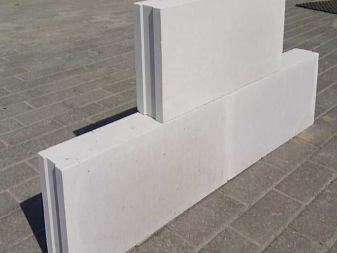
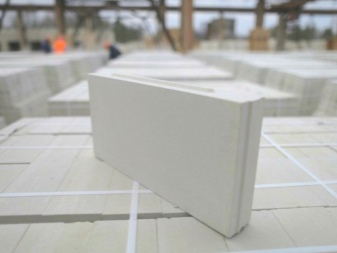
Moreover, for standard products, there is also a classification for corpulent or hollow. With the first, everything is clear - they consist of a single piece of plaster, which makes them stronger and more durable. Hollow slabs have in their thickness 5 or more special wells filled with air - they are needed in order to provide more effective thermal insulation. In some cases, craftsmen who only have hollow specimens at hand, whereas in this case, full-bodied ones would be better suited, they simply fill these grooves with solidifying solutions, which also increases the strength of the wall.
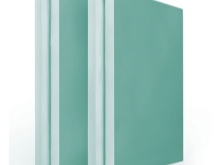
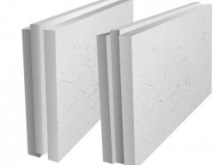
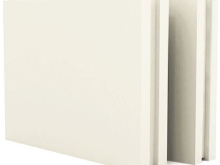
Hydrophobized
The developers of the German company thought that it would be unfair to deprive consumers of good material in a situation where the partition must be installed, for example, in the bathroom or in the kitchen. Especially for such cases, they produce a moisture-resistant version of their products, which, in addition to the usual gypsum, includes specific hydrophobic additives. The manufacturer specially carried out tests before launching it on sale, thanks to which it turned out - such GWPs can even be used for cladding buildings.
The overall line of moisture-resistant slabs looks the same as that of ordinary ones, which is convenient for construction. So that sellers and buyers can visually distinguish which slab is in front of them, hydrophobized products are deliberately made slightly greenish, while standard products always have a typical gypsum color. High humidity inevitably requires special reliability from the partition, therefore moisture-resistant GWP from Knauf are only full-bodied.

Comparison with plates "Volma"
Why consumers choose Knauf is beyond question - German quality is known all over the world, in this country they simply do not know how to do it somehow and always make sure that they are not ashamed of their own products. Another thing is that the wages of workers in Germany are quite high, and you have to pay for quality.
A cheaper alternative, but at the same time not inferior in class, can be the products of a Russian company Volma.
It is Volma that is considered almost the only sensible producer of GWP from the Russian Federation - competitors are not even close. Nevertheless, experts admit that German stoves are still better, albeit insignificantly, and the choice in favor of a domestic brand in many cases is due only to the desire to save money.

Considering the conditional shortcomings of Volma products, it is worth noting that her assortment is not wide enough - if the length and width can be chosen on a level with German products, then the standard thickness is 8 cm, and there are no alternatives, but for some this is not enough. If GWP from Germany is praised for the fact that plastering is not needed, then the Volma plate is rather rough even from the front side, and you cannot stick wallpaper on it without plaster. And if so, then the advantages of GWP in the form of quick installation, cleanliness of work and low cost begin to raise questions.
The Russian company decided to compensate for the shortcomings by adding fiberglass, which makes the slab more durable, but this medal also has a downside - it turns out to be more difficult to cut sheet material.

Criterias of choice
Having decided to build from tongue-and-groove slabs, you first of all should understand that they, in principle, are not suitable for the construction of load-bearing walls - no variety of them is suitable for achieving such goals. For all its advantages, this material does not have those strength indicators that allow it to be significantly loaded from above, and nothing very heavy can be hung on the erected wall.
By purchasing a tongue-and-groove plate from Knauf, the consumer gets the opportunity to save on its subsequent finishing. Of course, such a GWP in itself is not quite aesthetic in order to remain intact in the interior, but at least it does not need to be plastered - you can immediately paint or wallpaper it.

Please note that only the products of this German manufacturer have sufficient surface smoothness, while the competitors are doing much worse.

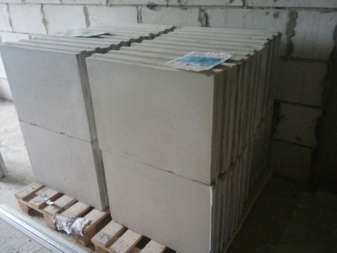
If the length and width are chosen depending on the size of the future wall, so that as few useless scraps as possible are obtained, then the thickness depends more on the purpose of the wall and the whim of the owner. Blocks with a thickness of 8 cm are usually used inside an apartment, and even hollow solutions are permissible. Tongue slabs with a thickness of 10 cm are much more often chosen for interroom partitions, where sound insulation must be at the highest level, for the same reason they are usually full-bodied.


Laying technology
Installation of GWP is not particularly difficult, but it should also be performed in strict accordance with the instructions, if you want the wall to be durable and safe for household members. The recommendations are simple, but you should not ignore them, so let's take a closer look at them.
Please note that, due to their relative fragility, tongue-and-groove slabs are not used to erect too large-scale structures. Experts point out that even in the case of Knauf products, it is not worth designing walls whose height would be more than 3 meters, and the width - more than 6. For a small redevelopment in an apartment, this should be enough with a margin, but in a private house once again think about whether your project goes beyond what is permitted.
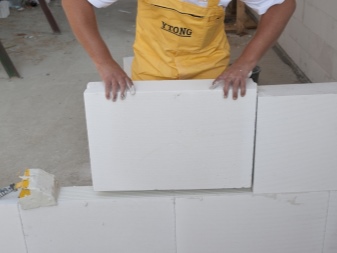
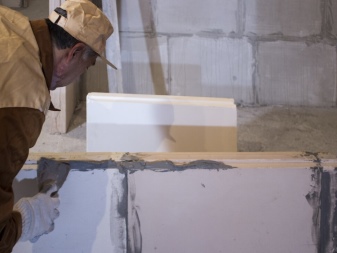
It all starts with the preparation of those areas on the floor and ceiling, which will become the points of connection with the future wall. Our motto is cleaning and cleaning again, because by leaving any stains of moisture, oil or even old paint here, you run the risk of providing the wall with a backlash in a place that is difficult to repair. If you do not want the wall to literally dangle on the brackets in the future, achieve perfect base cleanliness.
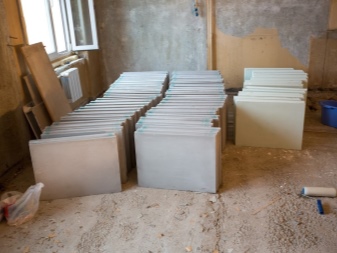
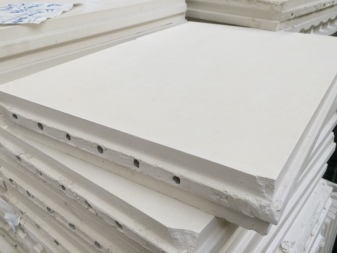
Before fixing anything to the floor and ceiling, mark the place of future fixings. Do not be lazy to double-check everything several times, using a plumb line and level, because any mistake is a skewed wall, damaged floor and ceiling.
The slabs are assembled into a single structure using grooves and ridges, but this is only among themselves - no one, of course, will drill grooves for them in the floor and ceiling. Accordingly, at the point of contact with the floor and ceiling, the protruding narrow ridges must be removed, otherwise they will interfere. When working on removing the ridge, make sure that the edge of the board remains as flat as possible - it depends on whether you have to putty the joints and to what extent.
Connecting individual blocks together, you do not need to check whether they fit together correctly, forming a perfectly flat surface - for this Knauf is considered a world-famous brand so that its products do not have obvious jambs. However, during the installation process, you simply must, after each step you take to install a new unit, check whether your structure is vertical with an angle of 90 degrees in relation to the floor, ceiling, adjacent walls. Better to check now than to redo it later.
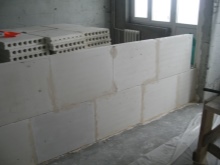
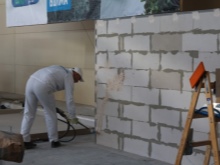
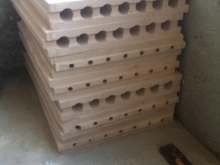
How exactly to attach the slabs to the capital foundations depends on what you will do with the erected wall further. The key advantage of Knauf GWPs is that they do not need to be plastered. Therefore, the method of fastening seems obvious - they are glued starting from the floor, and the possible gap from the upper edge to the ceiling, if it is small, is sealed with polyurethane foam. If the room is completely bare, and plastering looks like an absolutely inevitable procedure, it is wiser to use braces, which are often more reliable. However, even in this case, the connection between the individual fragments of the prefabricated structure will provide a glue, for which Fugen putty is suitable.
Please note that when gluing two tongue-and-groove plates, it is necessary to coat with glue exactly the grooves, and not the thorns, otherwise you run the risk of allowing smudges over the entire surface of the future wall... Although the glue (or putty) takes much less time to solidify than cement mortar for bricks, this construction time must still be given before sealing the joint joints. The accuracy of the grouting directly affects whether you have to do additional plastering to level the surface. At the same time, some types of finishes, such as decorative plaster or wallpaper with a textured texture, allow you to hide minor irregularities.
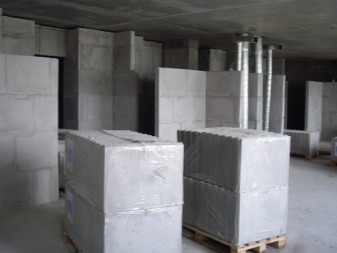
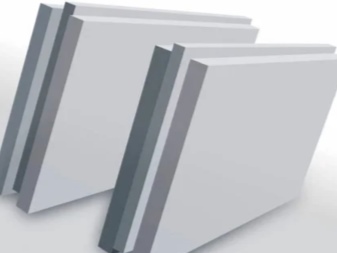
The following video describes the installation of tongue-and-groove slabs.













The comment was sent successfully.